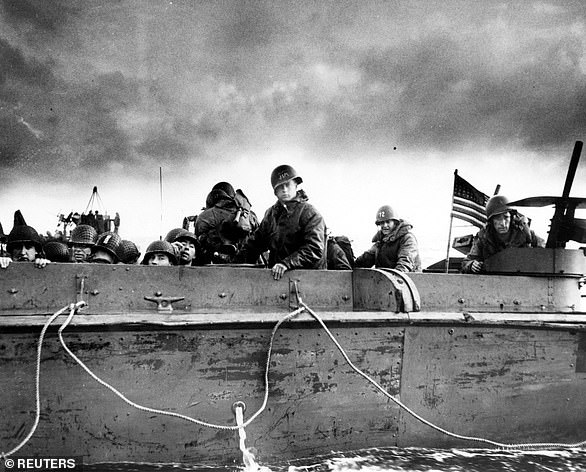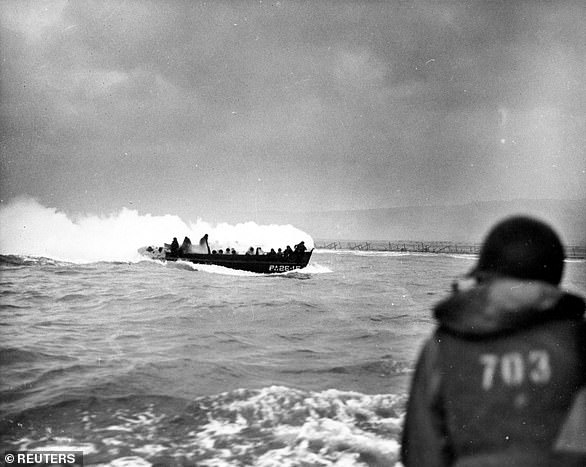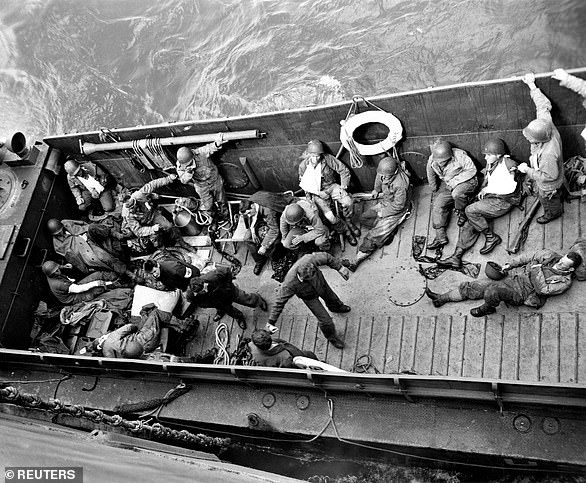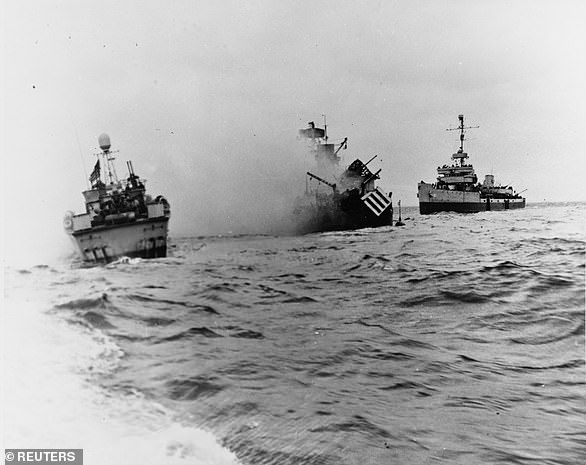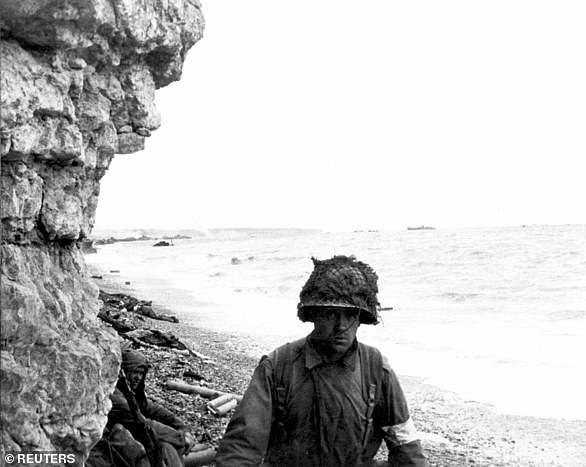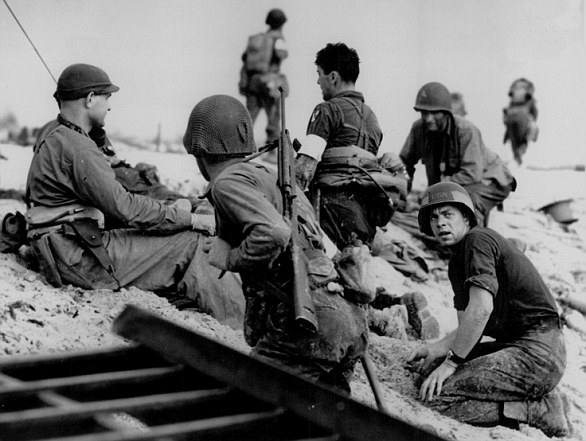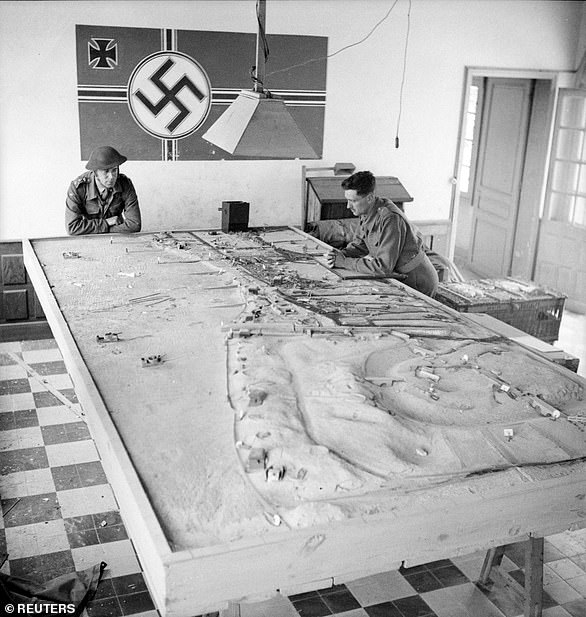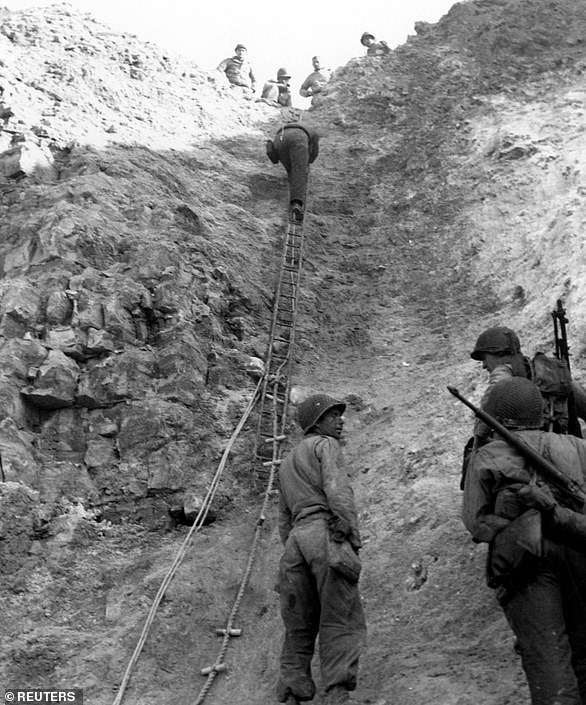They stood shoulder-to-shoulder by way of six lengthy years of conflict – the warrior-like chief and his steadfast sovereign.
But with D-Day at hand and with victory inside attain, there was a monumental bust-up between King George VI and his prime minister, Winston Churchill.
The row, unprecedented in historical past between a monarch and his first minister, threatened to compromise the Allied invasion of France – alarming generals, admirals and different prime brass.
However they have been powerless to intervene. And the dispute was all about who ought to first set foot in enemy-held northern France – the King, or the PM, a commoner.
The argument, which spiralled over a number of days, began simply as the ultimate preparations for Operation Overlord – the codename for the key mission which might ship a taskforce of 850,000 males onto the Normandy seashores – have been being put in place.
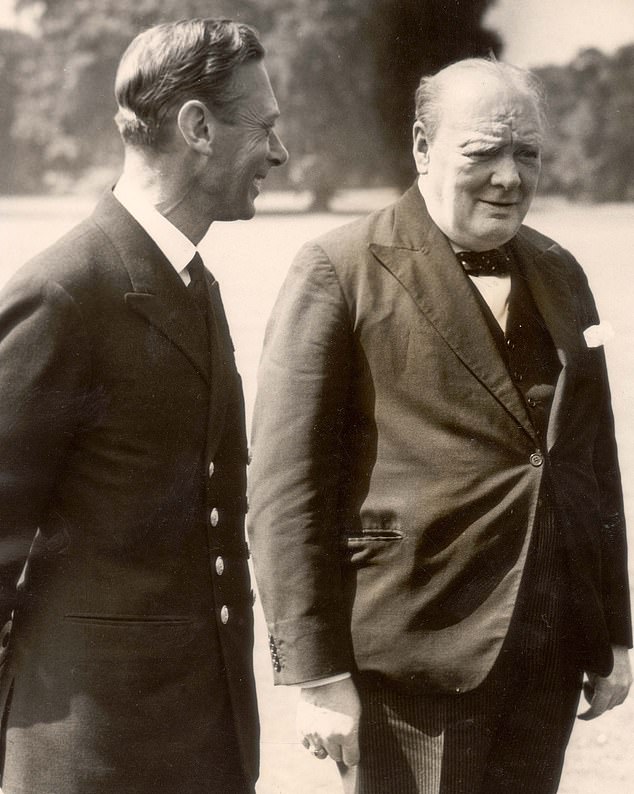
They stood shoulder-to-shoulder by way of six lengthy years of conflict – the warrior-like chief and his steadfast sovereign. But with D-Day at hand and with victory inside attain, there was a monumental bust-up between King George VI and his prime minister, Winston Churchill
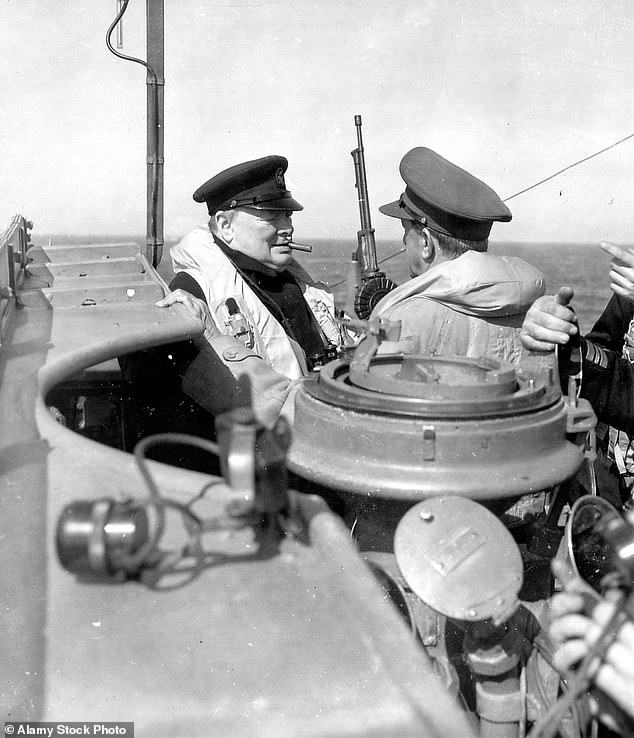
Winston Churchill seen on board a Royal Navy vessel off the coast of Normandy on June 12, 1944. In the long run, Churchill upstaged his sovereign by attending to Normandy first – not on D-Day, however six days later
On Could 30, 1944 the King invited Churchill to lunch at Buckingham Palace, solely to find it was the previous warhorse’s plan to look at the primary day’s invasion from the bridge of a Royal Navy battleship and, if every little thing went effectively, to step ashore and mingle with the troops.
‘The King, who’d been pondering of doing precisely the identical, prompt he ought to go too,’ wrote George VI’s biographer Sarah Bradford.
The King’s non-public secretary Alan ‘Tommy’ Lascelles, successfully CEO of Home of Windsor plc, was appalled at what he heard.
He pictured each Churchill and the King ‘being despatched to the underside of the English Channel’.
And even when they escaped enemy gunfire, he feared ‘the paralysing impact their presence on board would have on the unlucky captain, making an attempt to combat his ship in the course of the inferno.’
Lascelles persuaded his royal boss to climb down. Write to Churchill, he suggested, order him to do the identical – avoid the motion.
This Bertie duly did – however bought no reply. Churchill would not play ball.
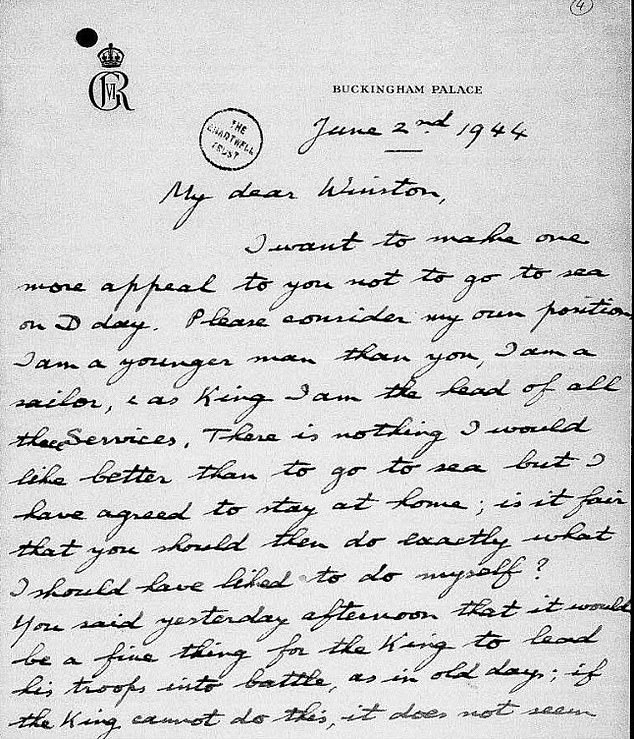
King George VI’s letter to Churchill imploring him to not go to Normandy for the beginning of Operation Overlord. The monarch had agreed to not be there over security fears
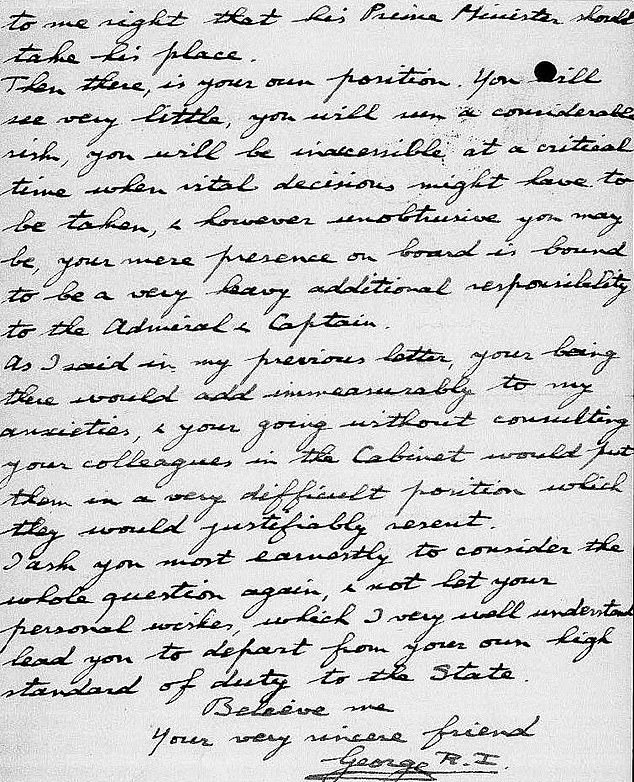
The King completed his letter by saying, ‘I ask you most earnestly to think about the entire query once more, & not let your private needs which I very effectively perceive lead you to depart from your personal excessive commonplace of responsibility to the State’
The following day the King attended a secret briefing from Admiral Ramsay, commander-in-chief of the Expeditionary Power, which solely had the impact of exacerbating the argument.
Churchill, additionally current, declared he’d need to get his Cupboard to conform to the King crusing to France – and that he would advocate them to vote in opposition to it.
George protested furiously. It was identified that, constitutionally, Churchill could not depart the nation with out the say-so of his sovereign.
However that solely made the prime minister dig his toes in additional.
‘His naughtiness is sheer selfishness, plus vainness,’ complained Lascelles. ‘Simply to gratify his love of theatre.’
In order that night time an offended King George sat down to put in writing once more to Churchill.
His letter stated: ‘I need to make yet one more enchantment to you to not go to sea on D-Day. Please think about my very own place.
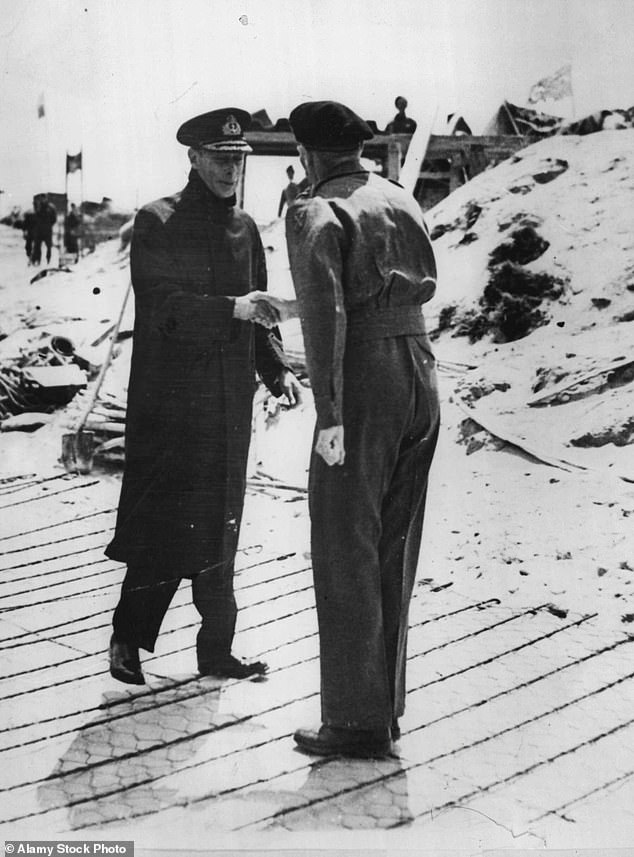
It took till June 16 – D-Day plus ten – for King George to step ashore and congratulate his troops. Above: King George VI greeting Common Montgomery in Normandy on June 16, 1944
‘I’m a youthful man than you, I’m a sailor, & as king I’m the pinnacle of all three providers.
‘There’s nothing I would really like higher than to go to sea however I’ve agreed to remain at residence; is it honest that it is best to then do precisely what I ought to have favored to do myself?
‘You stated yesterday afternoon that it might be a wonderful factor for the King to guide his troops into battle, as in previous days; if the King can not do that, it doesn’t appear to me proper that his Prime Minister ought to take his place.
‘Then there may be your personal place. You will notice little or no, you’ll appear a substantial threat, you can be inaccessible at a important time when important selections may need to be taken, & nonetheless unobtrusive you could be, your very presence on board is certain to be a really heavy further accountability to the Admiral & Captain.
‘As I stated in my earlier letter, your being there would add immeasurably to my anxieties, & your going with out consulting your colleagues within the Cupboard would put them in a really troublesome place which they’d justifiably resent.
‘I ask you most earnestly to think about the entire query once more, & not let your private needs which I very effectively perceive lead you to depart from your personal excessive commonplace of responsibility to the State.’
However, fumed Lascelles, Churchill nonetheless would not capitulate. He was ‘similar to a naughty baby when he begins planning an escapade [like this]’.
It was a battle of wills, an arm-wrestling match like no different in historical past.
Who can be the primary to present in? The King famous in his diary: ‘His egocentric means of wanting on the matter – he does not appear to care concerning the future, or how a lot relies on him.’
Hours, which appeared like days, handed with out the obstinate Churchill responding to the King’s demand to remain residence.
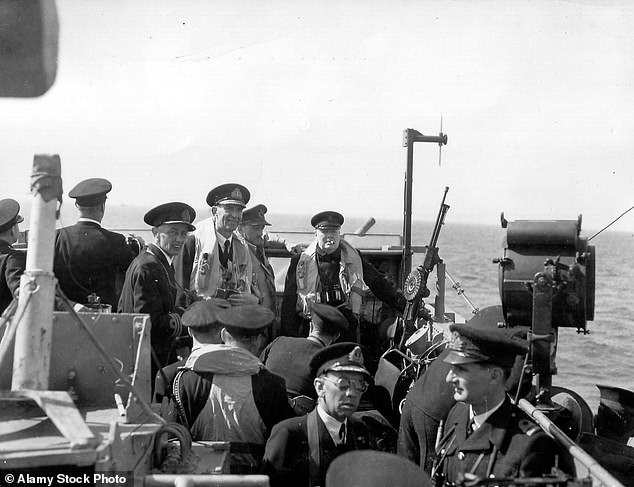
Prime Minister Winston Churchill on board a Royal Navy vessel off the coast of Normandy, June 12, 1944

Winston Churchill visits jubilant British troops in Normandy after the success of Operation Overlord, July 23, 1944

Winston Churchill strokes Common Montgomery’s canine Rommel throughout a go to to Normandy, August 7, 1944

British Prime Minister Winston Churchill pictured on his go to to Normandy in Northern France, six weeks after the Allied D-day landings, July 23, 1944

British troops take positions on Sword seashore throughout D-Day, June 6, 1944

Troops from the forty eighth Royal Marines at Saint-Aubin-sur-mer on Juno Seashore, Normandy, France, throughout the D-Day landings, June 6, 1944

Allied planes bomb German boats to arrange for the touchdown of troops, Normandy 1944
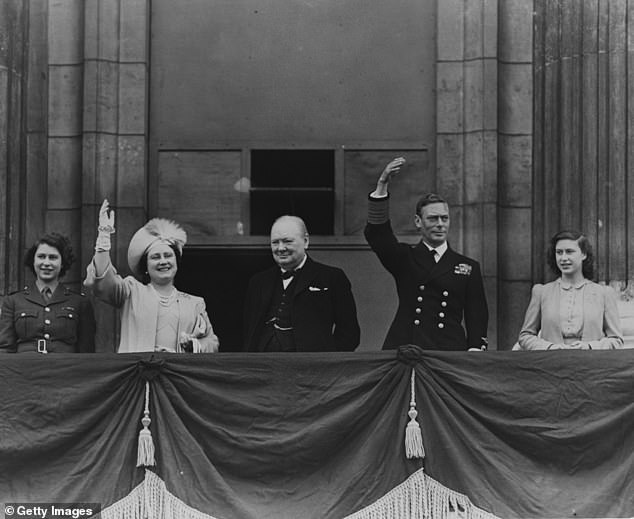
Churchill on the Buckingham Palace balcony with King George VI, Queen Elizabeth, Princess Elizabeth and Princess Margaret on VE Day in 1945
Lastly, with D-Day now simply two days away, there got here a phone name from Churchill to Lascelles saying he’d bow to the King’s request.
There adopted a ‘grumpy, waspish and ungracious letter’ confirming his resolution.
There have been sighs of reduction all spherical – however the battle of wills wasn’t over but.
In the long run, Churchill upstaged his sovereign by attending to Normandy first – not on D-Day, however six days later.
It took till June 16 – D-Day plus ten – for King George to step ashore and congratulate his troops.
Each males obtained an equally enthusiastic reception, however on the drive residence, George spoke bitterly of the best way he’d been outfoxed.
However the conflict’s finish was in sight, and their private sport of one-upmanship light into the gap because the Allies scored their remaining victory over the Nazi menace.
Collectively the 2 males stood, buddies as soon as extra, on the Buckingham Palace balcony as peace was declared.
However it left behind a captivating constitutional query – who, ultimately, wields extra energy? The king, or his prime minister?



